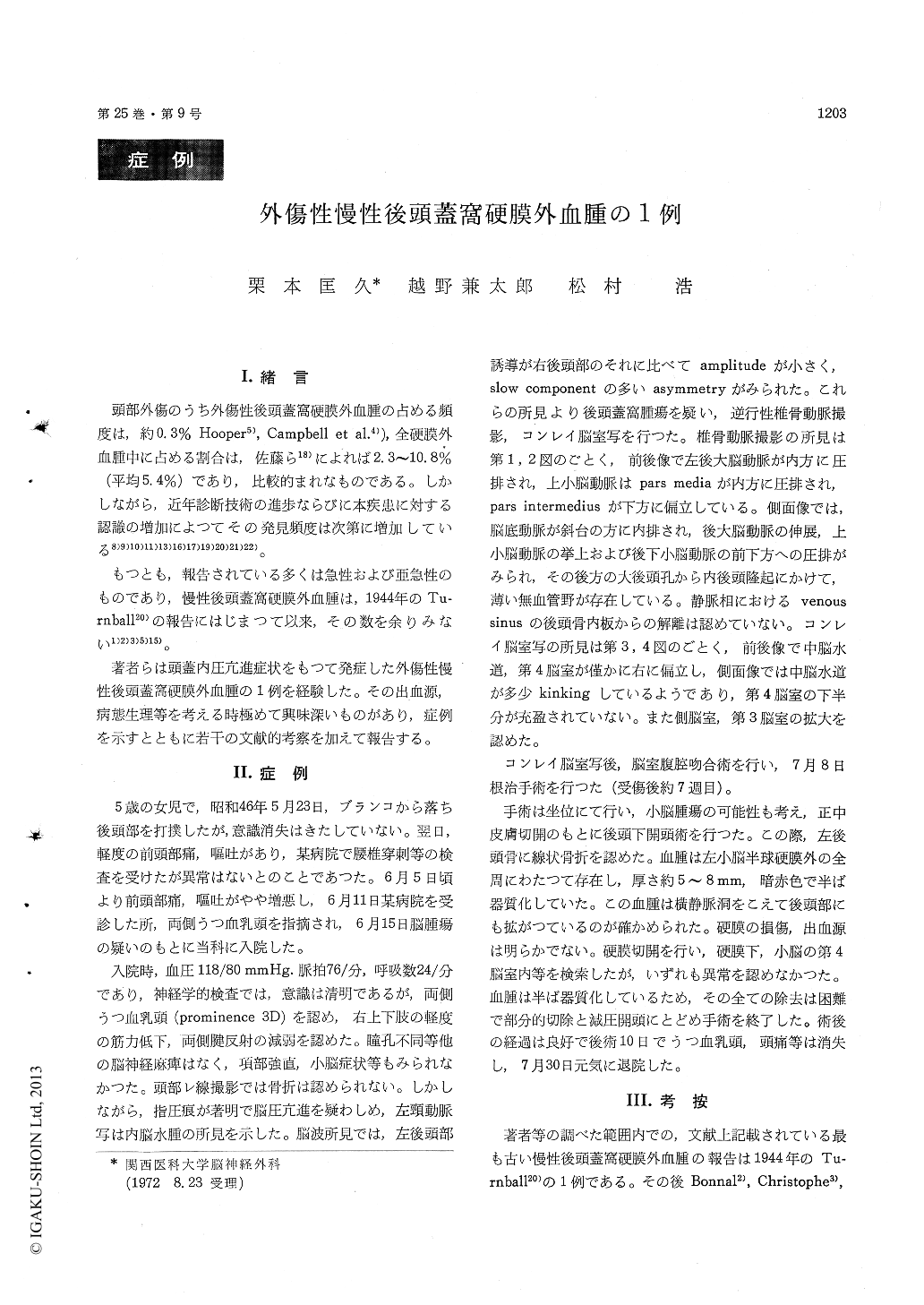Japanese
English
- 有料閲覧
- Abstract 文献概要
- 1ページ目 Look Inside
後頭蓋窩硬膜外血腫の頭部外傷中に占める頻度は比較的少い。中でも慢性例の報告はまれである。
著者等は頭部外傷が比較的軽度で,受傷後3週間目に頭蓋内圧充進症状をもつて来院し,小脳腫瘍とまぎらわしかつた慢性後頭蓋窩硬膜外血腫の一例を経験した。
その病態生理は,天幕上のいわゆる遅発性硬膜外血腫と呼ばれているものや,慢性硬膜下血腫ともその趣きを異にしており興味深いものである。ここに症例を示し,頻度,症状 血管写,脳室写およびその病態生理につき若干の文献的考察を加えて報告した。
An extradural hematoma in the posterior fossa is relatively uncommon, especially chronic one is very rare. We have experienced one case of chronic extradural hematoma simulating a posterior fossa tumor.
This 5-year-old girl had a history of occipital blow not associated with loss of consciousness three weeks before admission. Her symptoms were main-ly due to increased intracranial pressure such asheadache, vomiting and choked discs. A posterior fossa tumor was suggested by vertebral angio-graphy and conray ventriculography. Suboccipital craniectomy revealed an old organized hematoma covering the left extradural cerebellar hemisphere with 5 to 8 mm depth which was partially re-moved. She made an uneventful recovery after operation.
The frequency, symptoms and pathophysiology of the chronic extradural hematoma in the posterior fossa were discussed. Above all, it is interesting to note that the pathophysiology of the chronicextradural hematoma in the posterior fossa is quite different from that of the supratentorial epidural or chronic subdural hematoma. It is rationalized to consider that a venous hemorrhage in the pos-terior fossa occurred immediately after head injury and that a clot formation was accomplished during asymptomatic period. Later, the symptoms became manifest associated with increase in the volume of the clot by osmotic factors at the time of clot liquefaction and intermittent blockage of cerebro-spinal fluid pathways.

Copyright © 1973, Igaku-Shoin Ltd. All rights reserved.


